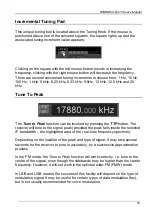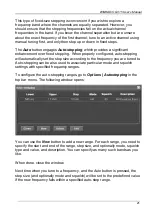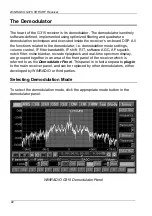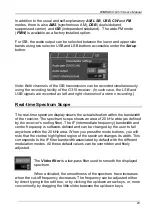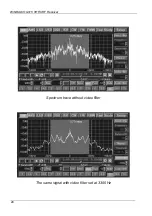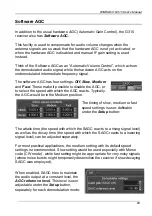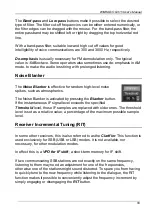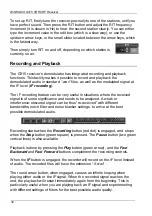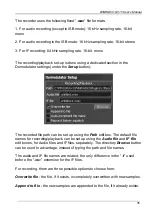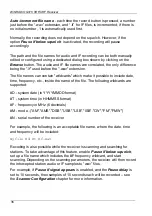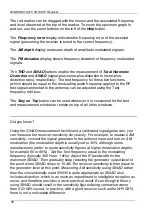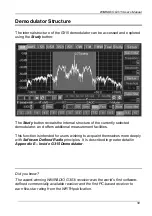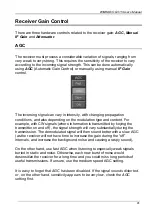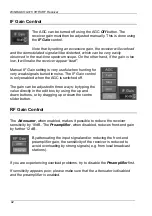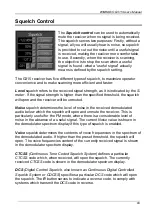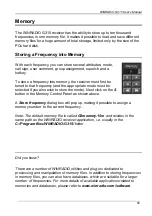
WiNRADiO G315 User’s Manual
33
The
Band-pass
and
Low-pass
buttons make it possible to select the desired
type of filter. The filter cut-off frequencies can be either entered numerically, or
the filter edges can be dragged with the mouse. For the band-pass filter, the
entire passband may be shifted left or right by dragging the top horizontal red
line.
With a band-pass filter, suitable low and high cut off values for good
intelligibility of voice communications are 300 and 3000 Hz, respectively.
De-emphasis
is usually necessary for FM demodulation only. The typical
value is -6dB/octave. Some operators also sometimes use de-emphasis in AM
mode, to make the audio less tiring with prolonged listening.
Noise Blanker
The
Noise Blanker
is effective for random high-level noise
spikes, such as atmospherics.
The Noise Blanker is activated by pressing the
Blanker
button.
If the instantaneous IF signal level exceeds the specified
Threshold
level, those IF samples are replaced with older ones. The threshold
level is set as a relative value, a percentage of the maximum possible sample
level.
Receiver Incremental Tuning (RIT)
In some other receivers, this is also referred to as the
Clarifier
. This function is
used exclusively for SSB (USB or LSB) modes. It is not available, nor
necessary, for other modulation modes.
In effect this is a
VFO
for
IF shift
;
a short-term memory for IF shift.
If two communicating SSB stations are not exactly on the same frequency,
listening to them may need an adjustment for one of the frequencies,
otherwise one of the stations might sound distorted. To spare you from having
to quickly tune to the new frequency while listening to the dialogue, the RIT
function makes it possible to conveniently adjust the frequency increment by
simply engaging or disengaging the
RIT
button.

